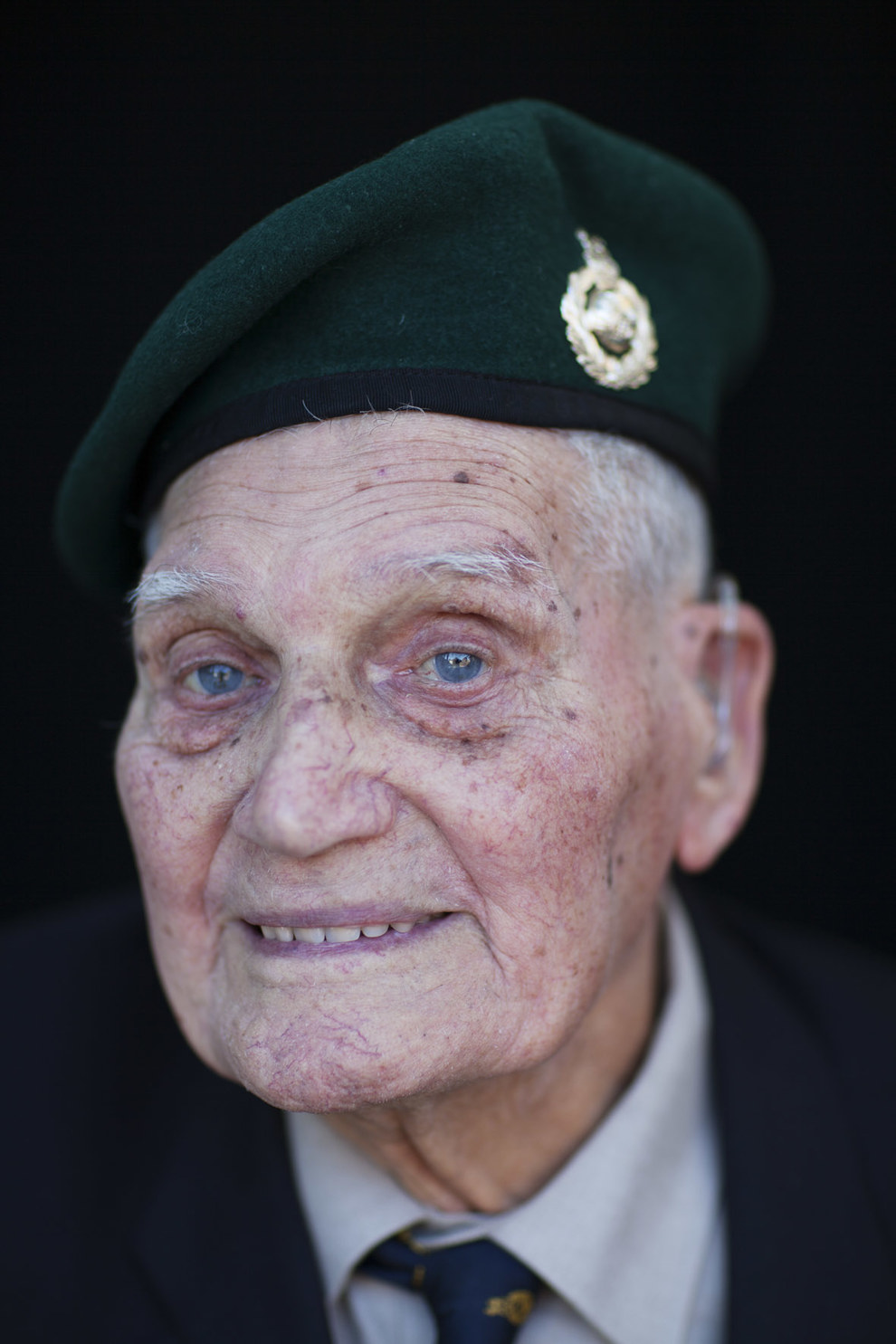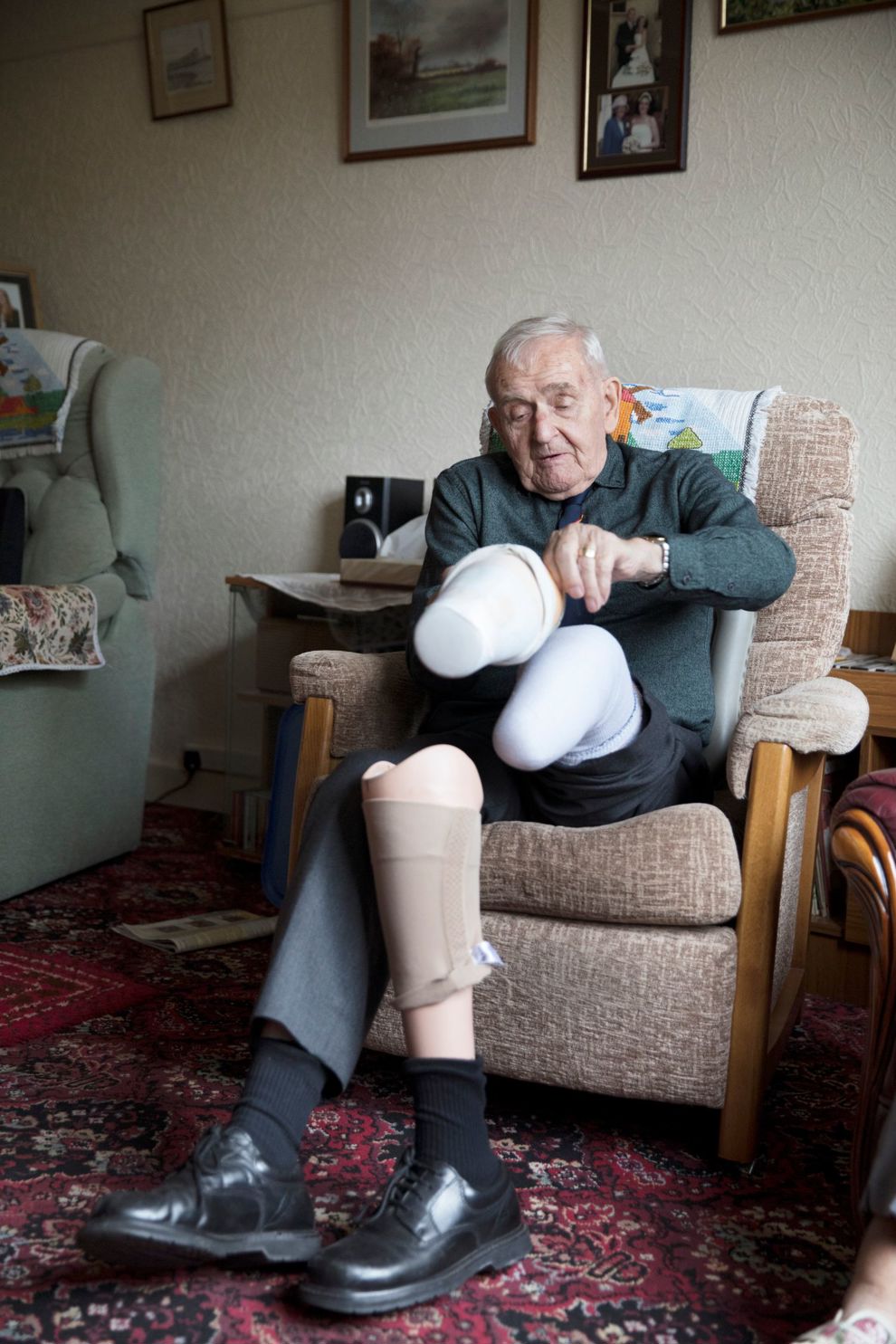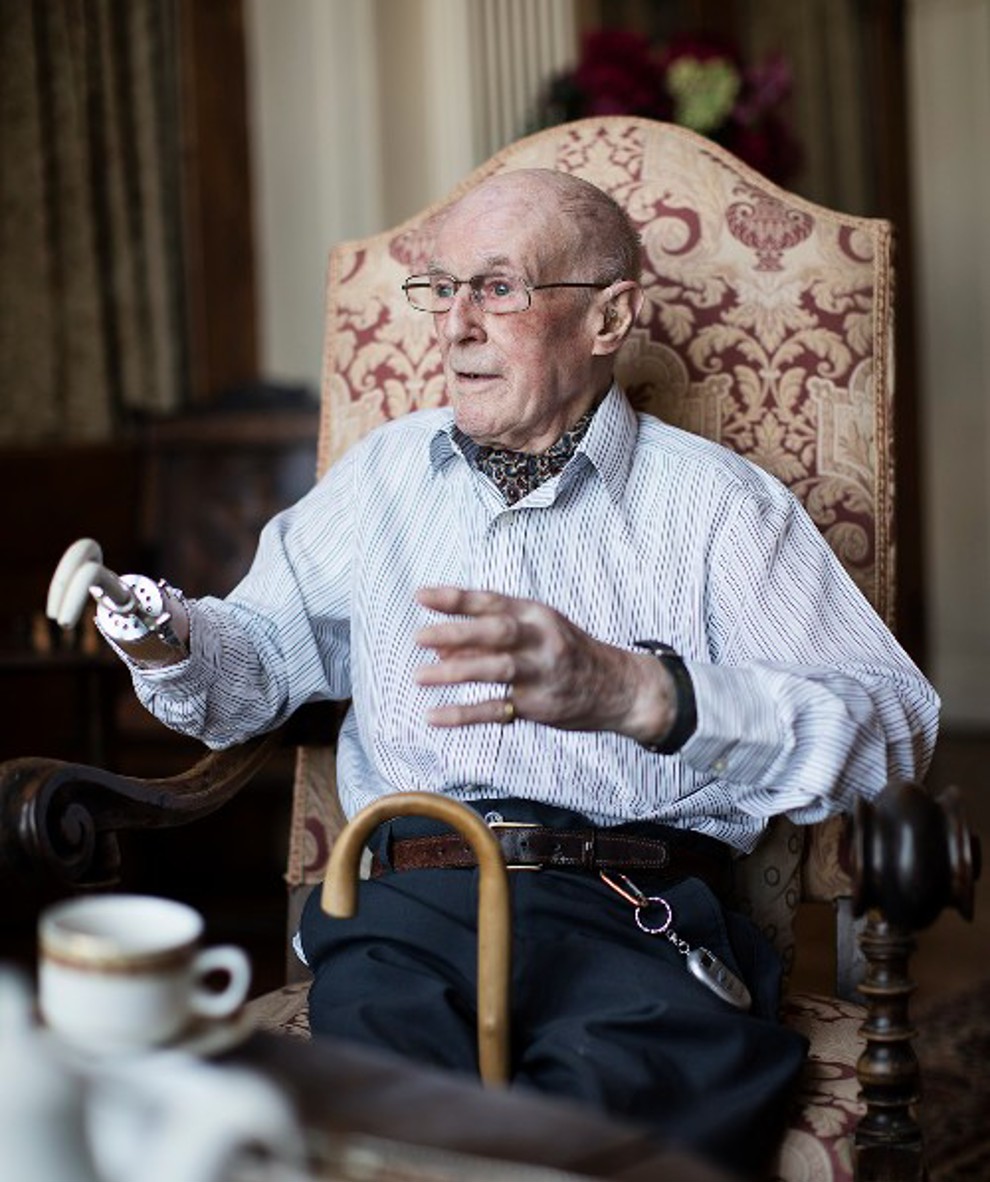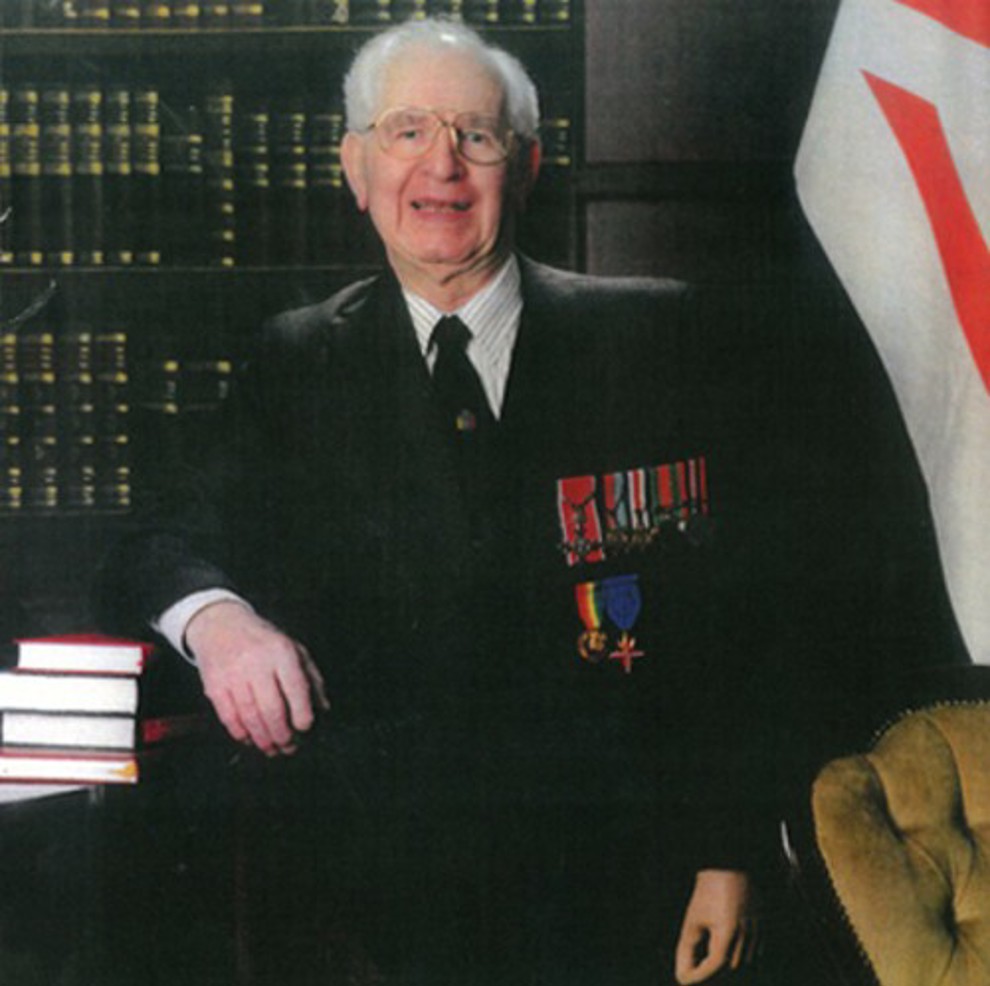Over 150,000 Allied troops landed on the beaches of Normandy on D-Day, marking the beginning of a lengthy and gruelling campaign to liberate North-western Europe from Nazi Germany.
Sadly, thousands of Allied forces never made it home. Those who survived had their lives changed forever. Some decided to retell their stories – even after such harrowing experiences.
Meet Blesma’s Members and D-Day Veterans
Blesma has been committed to supporting wounded veterans since World War I, and our work continues today. We are the only national Armed Forces Charity that supports limbless veterans for the duration of their lives.
Meet some of our veteran members who were involved in the D-Day landings and the Battle of Normandy.
Roy Hayward: One of D-Day’s last surviving veterans
We landed on the night of D-day, so it was very dark. I can only remember landing on the beach, then we moved on through the lanes and eventually stopped because we thought we might have gone too far. Beyond what then would have been called the front line.
Roy Hayward
Only 19 at the time, Roy’s tank unit – Sherwood Rangers Yeomanry, had made progress into France when his tank was hit. Roy was suddenly plunged into agony and the tank was starting to go up in flames.
He managed to crawl away, but in the process his right leg had been shattered below the knee and his left foot blown off.
“I was so numb at the time that I wasn’t aware of the pain. I was just feeling extremely upset about the fact I saw what had happened to me,” Roy exclaimed.
Despite his right leg “hanging by a thread” and his left leg smashed into pieces, he managed to pull out his comrade through the tank’s turret.
"I went to a hospital in Portsmouth. A nurse arrived and told me she was going to dress my wounds. She took the dressings off and, to my horror and her delight, I found that both stumps were crawling with maggots! She said that they had kept the wound absolutely clean, and that as far as they were concerned I was in a very good state. They took me to a shoe-shop and asked me what size feet I wanted. I think there was a pair of shoes I fancied which were 8 and a half, so I went for them. It's not the best of sizes really!
“I was soon contacted by Blesma, who asked if they could do anything for me. From then on I felt a real feeling of reassurance, it was not only the reassurance that someone would be there to aid with benefits and welfare etc., but also a real sense of Camaraderie because all of us were in the situation.”
80 years later, at the age of 99, Roy was one of only a handful of D-Day veterans alive to see the 80th anniversary. He sadly passed away at home in the latter half of 2024.
Vincent Horton: Captured twice during WW2

Vincent Horton had a truly remarkable experience during WW2. He joined the Royal Marines in 1940 and was posted to the 11th Battalion Searchlight Unit, Royal Marines and was sent to fight in Crete.
While fighting during the Battle of Crete, Vincent was captured by the Germans and became a Prisoner of War in June, 1941. Remarkably, he and others escaped and after six months trying to evade the Germans, he was finally evacuated to Egypt by submarine.
In September 1942, Vince was back on the battlefront and part of a Commando raid on Tobruk, Libya, when he was captured again. He was exchanged after seven months, this time after being in a Prisoner of War camp in Italy.
But his WW2 journey didn’t end there. In 1944, he was involved in the D-Day landings. Vincent’s landing craft, as part of 48 Royal Marine Commando RM left the coastal village of Warsash, near Southampton for D-Day. He managed to successfully advance and reach the region of Sallenelles, near Caen.
On 15th June, 1944, nine days after the initial landing on Juno Beach, Vince stepped on a devastating anti-personnel mine. As a result of his life-threatening injuries, he was evacuated and had to have both of his legs amputated.
I was sent with a message for A Troop, around Sallenelles. The Germans started to shell me, so I switched routes – and that’s when I was blown up by a landmine and lost both my legs. I don’t remember much about it, although I do vividly recall that I thought I was going to die.
Vincent Horton
After the War, Vincent married his wife, Olive in 1946, and was discharged from the Royal Marines in September 1948. He went on to train as a shoe cobbler and later got a job working in telephony for the Postal Service.
Vincent Horton passed away in 2017. We will remember him.
Kenneth Foster: Battling prejudice after amputation
Kenneth Foster was involved in the initial landings on the treacherous beaches of Normandy.

Whilst advancing further into the region, he was hit by an anti-tank gun near the commune of Bayeux in Northern France. Devastatingly he lost a leg as a result of his severe wounds.
“It felt like I’d put my leg in a bucket of boiling water,” he exclaimed. “The first thing I got at the first aid station was a pot of sweet tea but they dressed it and then did an operation to amputate at the field hospital."
“The Padre (Royal Army Chaplains' Department) asked if there was anyone he wanted me to write to and my girlfriend Vera was the only one I wanted,” he said. “I was more worried about losing her than losing my leg.”
“At the hospital, I was given some crutches and told ‘Off you go’. You just got on with it in those days and I didn’t let it hold me back,” he added.
Ken and his partner Vera got married six months later in December, 1944. Ken initially battled workplace prejudice against injured war veterans, which was sadly common after WW1 and WW2, however, he went on to work as a successful telephone engineer for 30 years and the couple brought up three children.
Kenneth Foster passed away aged 99. We will remember him.
Roy Phillips: Defying a shoe mine
When he was just 14, Roy Phillips joined the Royal Marines as a Bugle boy (a brass instrument).

When he was merely 16, he was involved in the D-Day landings and advanced into Trieste, Italy with the Royal Marines. Catastrophically, whilst in Trieste, Roy stood on a shoe mine on a beach and lost his right leg below the knee.
“The last thing I remember is walking along a beach in Italy to get back on the boat then waking up in hospital two weeks later. I had stepped on a shoe mine, which is designed to blow your boot off with your foot in it.” He exclaimed.
After WW2 Roy left the Marines and worked all over the world in various roles before meeting his wife, Rose, in Mauritius and settling in North Devon, where they had two children.
In 2017, Roy received the Legion D’honneur. He was also awarded the 1939-45 star, the Italy star, the France and Germany star and the War medal 1939-45.
Roy Phillips passed away in 2021. We will remember him.
Peter Van Zeller: Shot by a sniper
Peter Van Zeller served in both the RAF and the Army during WW2, and six days after D-Day, during the Battle of Normandy (Operation Overlord) he was shot in the arm by a sniper.

"It was a week or so after D-Day – we were the first reinforcements to arrive. Our boys must have been 10 miles into France, and I was drafted into the Somerset Light Infantry."
A surgeon saved his elbow but the amputation ended his war. He received no compensation and no rehabilitation, but was determined to live a full and independent life.
"I learned to do everything again. It still takes me an hour to shave, shower, dress and make my bed each day, but I do it.
“I was always determined and stayed positive. I’ve seen people give up, and you can even wish yourself to death. I’ve been through despondency, but I don’t let it last,” he added. “I’ve never given up – and Blesma helps people to not to give up, too.”
Peter Van Zeller passed away aged 99. We will remember him.
William Robert Dunn MBE JP: Caught in machine gun fire
William (Bill) Dunn landed on Juno Beach during D-Day. His Churchill tank was one of the first across Juno before it got stuck in a large crater and sank in the mud.

As the crewmen got out, four of the crew were killed by mortar fire, and only Bill and fellow Blesma Member Bill Hawkins managed to survive.
Machine gun fire seriously wounded Bill. He received gunshot wounds to both legs and his spine.
Bill Dunn lost his left arm above the elbow and received gunshot wounds to both legs and his spine whilst engaged in the Normandy Landings on Juno Beach during World War II.
Following discharge from the military, Bill went back to work in mining but soon had to give up the underground work due to his war injuries. Instead, he found work as a cost clerk with the National Coal Board in his home town of Sunderland, and joined Blesma in December 1944. Bill married his beloved wife, Marion in 1947 went on to be awarded an MBE in 1973.
William (Bill) Robert Dunn passed away in 2014. We will remember him.
Our D-Day veteran members received vital assistance from Blesma after their injuries and for the rest of their lives. All of our D-Day veterans who sadly passed are sorely missed.
If you would like to support our work at Blesma, your donation can make a significant difference to improving the lives of veterans.
We can help
We are dedicated to assisting serving and ex-Service men and women who have suffered life-changing limb loss or the use of a limb, an eye or sight. We support these men and women in their communities throughout the UK. Click the link below to find out the different kinds of support we offer.
Get Support